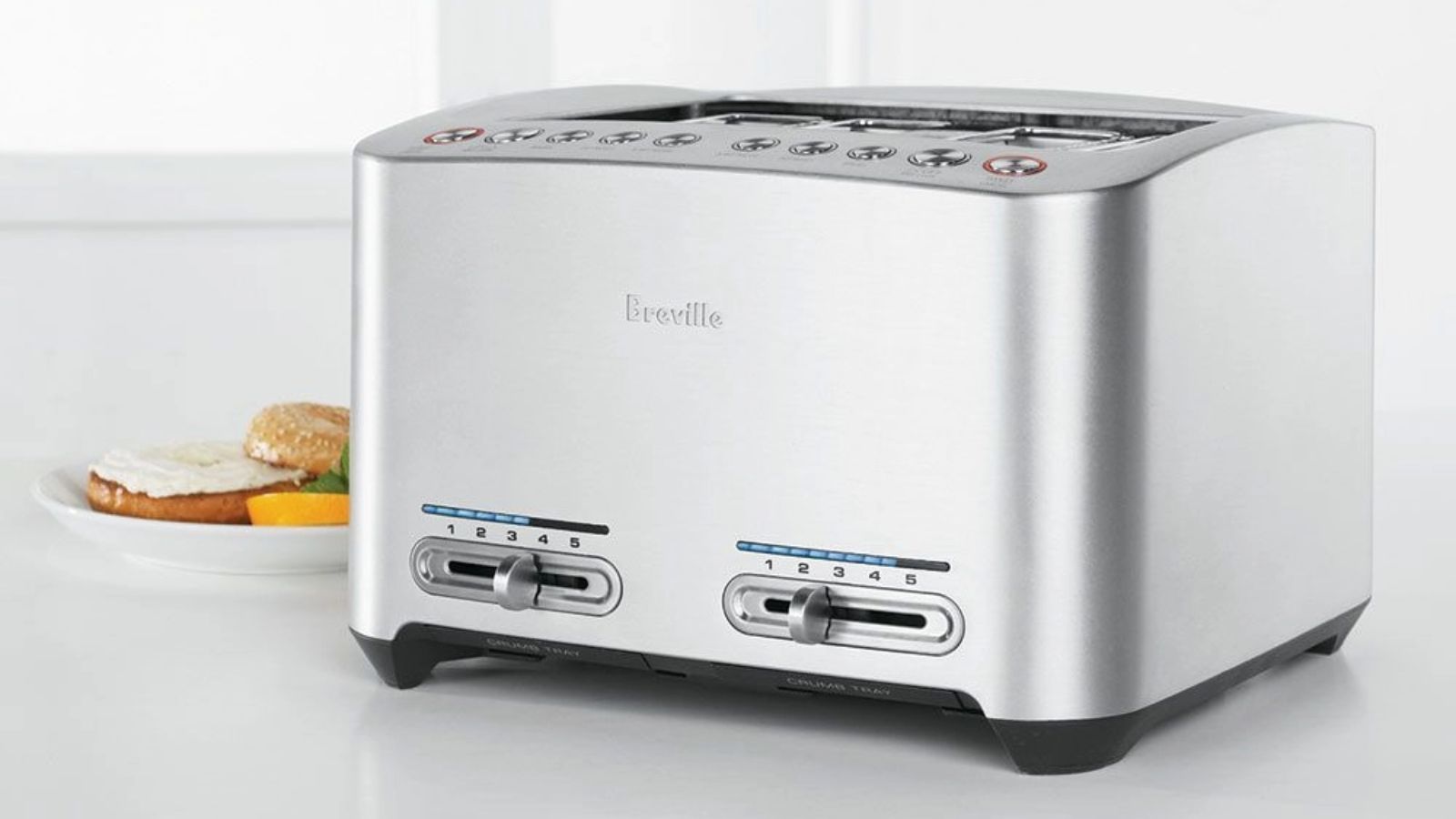
In busy homes, only three things really matter for your toaster: capacity, reliability, and versatility. Breville’s Die Cast Toaster scores a home run on all three and still comes with other nice extras too. It ticks a lot of boxes for a lot of people, so our experts were keen to find out more.
I've been testing the best toasters for months and I had high hopes for the Four Slice Die Cast. I tested it across a range of breads, from basic white bread to artisan sourdough, fruit bread, gluten-free bread, as well as pop tarts.
Generally, I was pretty impressed with most of the Die Cast's features. Whilst I think the 'Smart' tag in the name is a bit of a stretch and it wasn't the most consistent, it comes with luxurious (or unnecessary) quirks too. There’s a lot to love, but a little to learn.
Specifications

Unboxing
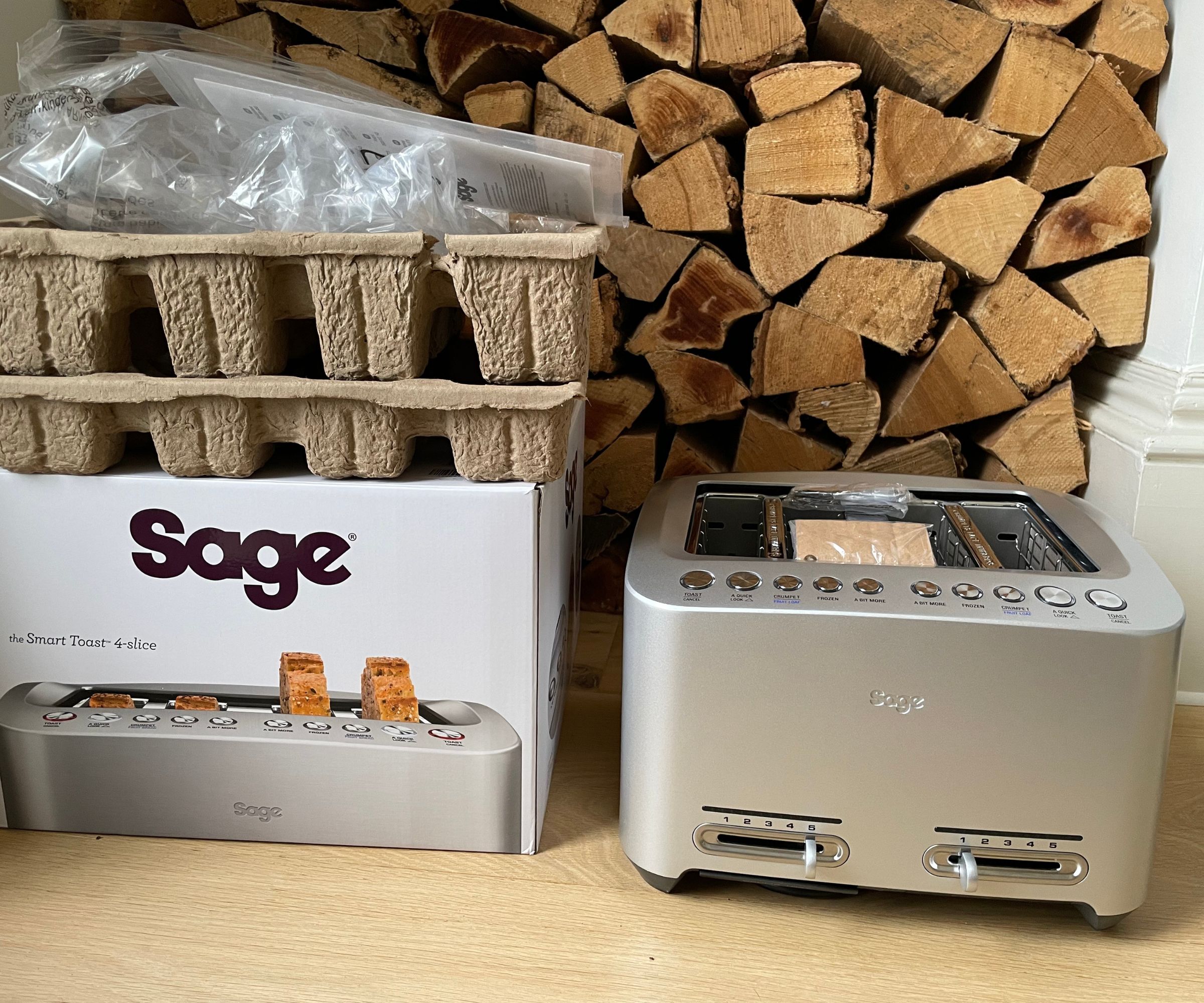
Breville does a great job of recyclable packaging. This came in cardboard, packed with some more cardboard, and then a little bit more cardboard too. There was some plastic protecting the aluminum outside, but not a huge amount.
On the countertop, this looks bigger than lots of other toasters, but the design won't dominate your space. Plus, this is a four-slice model, so the dimensions are going to be bigger anyways. The slots looked nice and wide, perfect for big chunks of bread and the overall aesthetic looked sleek. If you have aluminium or stainless steel in your home already, this would fit right in.
Who would it suit?
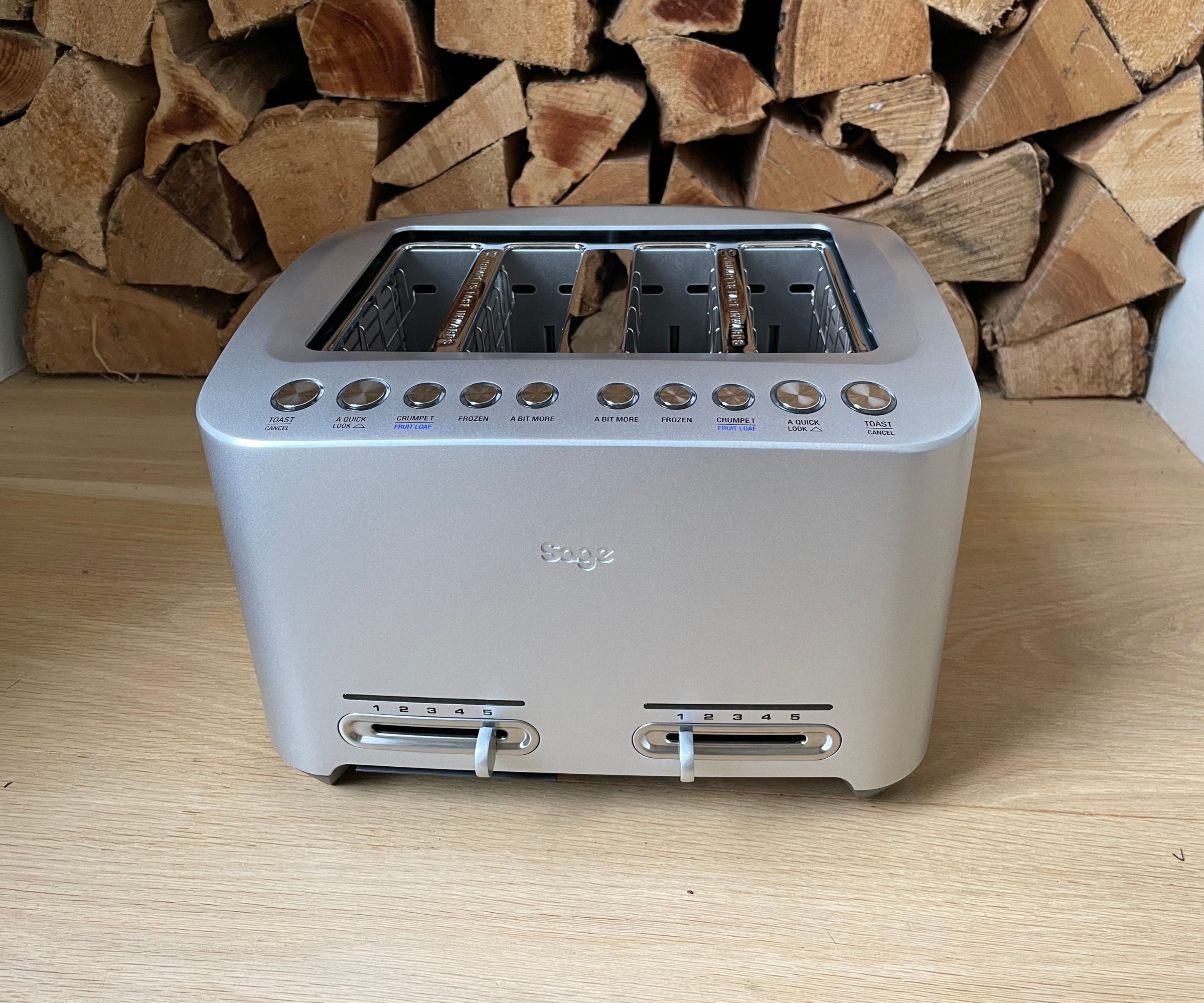
The sheer capacity and versatility of the Breville makes it perfect for large homes. You can warm two pop tarts for kids on a more delicate setting at the same time you toast two slices of sourdough at a fiercer setting. Plus, you’ll hardly have to do a thing: there’s an auto lift and auto lower function integrated to help those who always have their hands full when it’s time to toast.
The buttons along the top of the toaster look like a lot to learn, but they're just duplicated, because they control apply to two of the slots each. It looks like quite an overwhelming selection at first, but once you're used to it, you can easily toast a wide selection of breads.
What is it like to use?
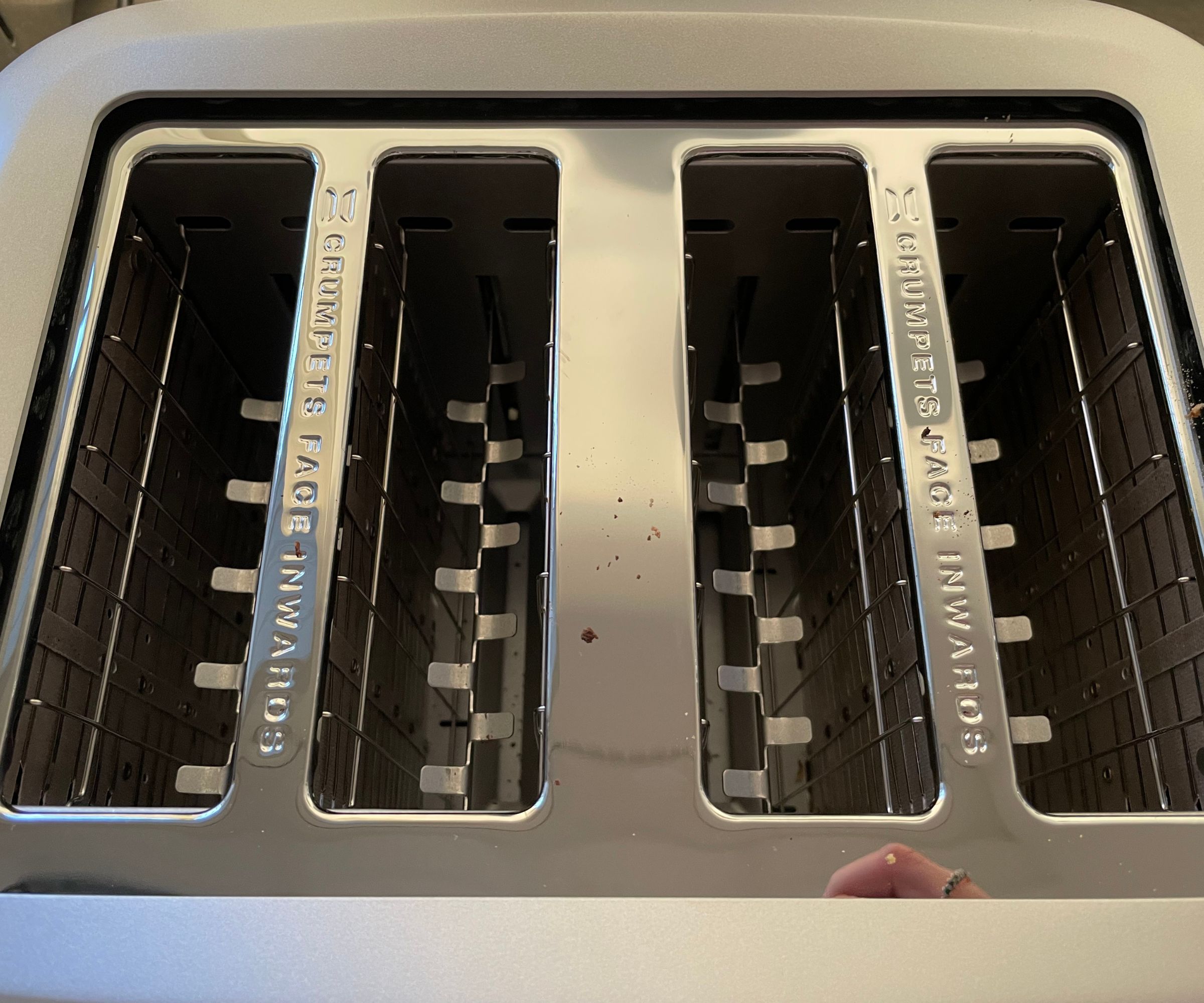
As I just mentioned, the long row of buttons actually makes this look more complex than it is. The slots work two at a time, so they're effectively like two separate toasters which have been welded together. There's no way to set all four running at the same time, but you can get pretty close: you just press one button and then the next.
Once I had figured out the controls, I ran the toaster through empty, as you always should. Sometimes, this will create a plastic smell, but this didn't happen for the Breville.
Test 1: White bread
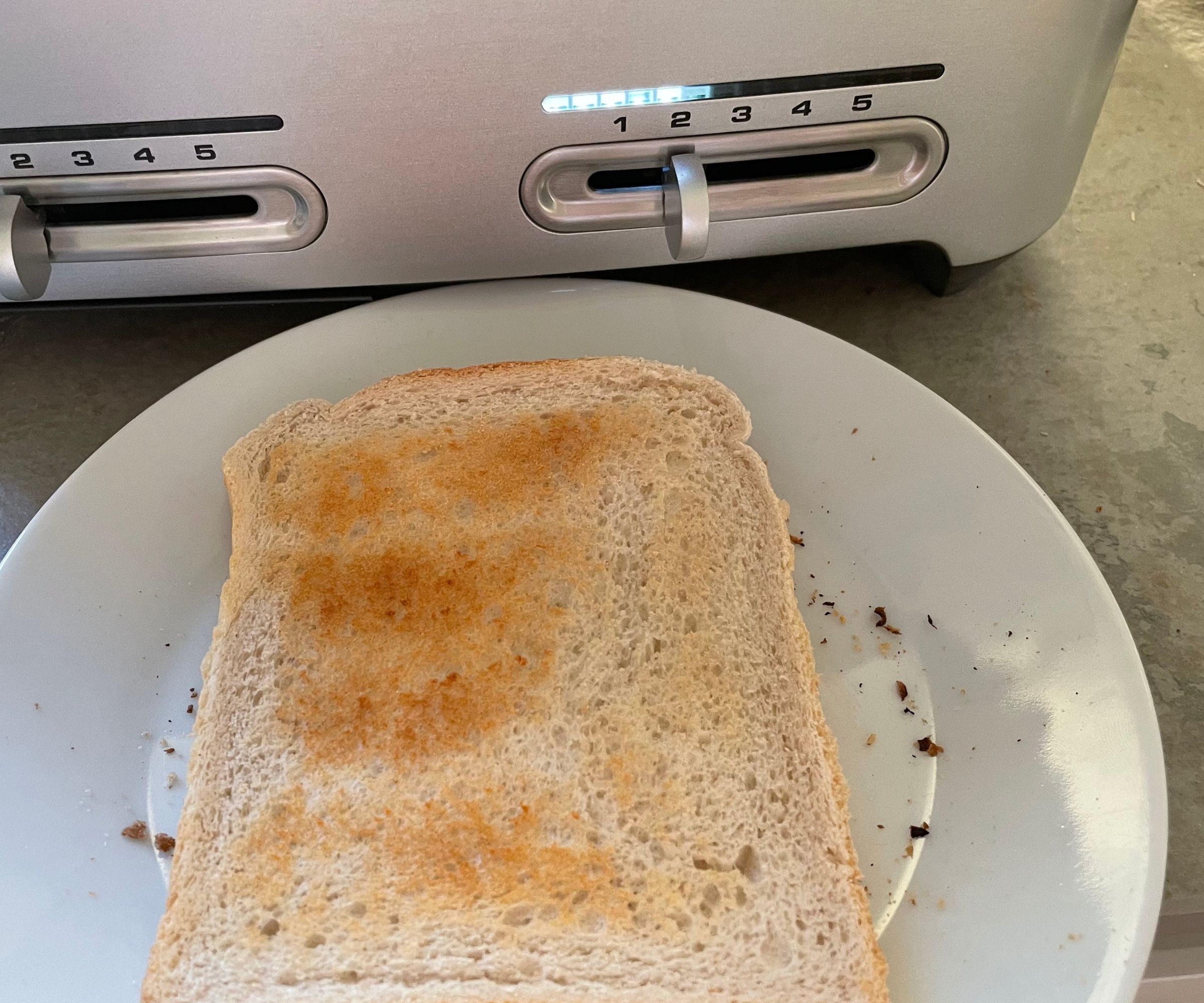
White bread is a good test of any basic toaster. It felt close to criminal placing super-cheap, sliced bread in a toaster this premium. Nevertheless, I slotted my slice in, and set the timer for two minutes. The Breville auto-lowered and clamped my toast into place for exactly two minutes.
At one minute and thirty seconds, I tested out the 'Lift & Look' function, which almost lifted the whole slice out of the toaster. The toast (or bread at this point) was really pale, so I wasn't sure how it would turn out at the two minute mark. You can see from the picture that ended up looking pretty pale.
I put the slice back into the toaster and pressed the 'A Bit More' button, which adds thirty seconds to the timer. I ended up pressing that twice, so the image above is the results of three minutes' toasting. That's quite long for such a simple piece of toast and that was reflected in the flavors. The white slice tasted dry and crumbly.
I think the Breville was just warming up, because I tried the same again at the end of the tests and my toast was golden in one and a half minutes. The color was still not distributed evenly, but it looked a lot better than my first attempt.
I also had similar results trying the same white bread from frozen, using the frozen setting. It was warmed through, not too dry, and a deep golden color. The Breville really warms up as you use it, so you'll need to be prepared to experiment a little.
Test 2: Sourdough
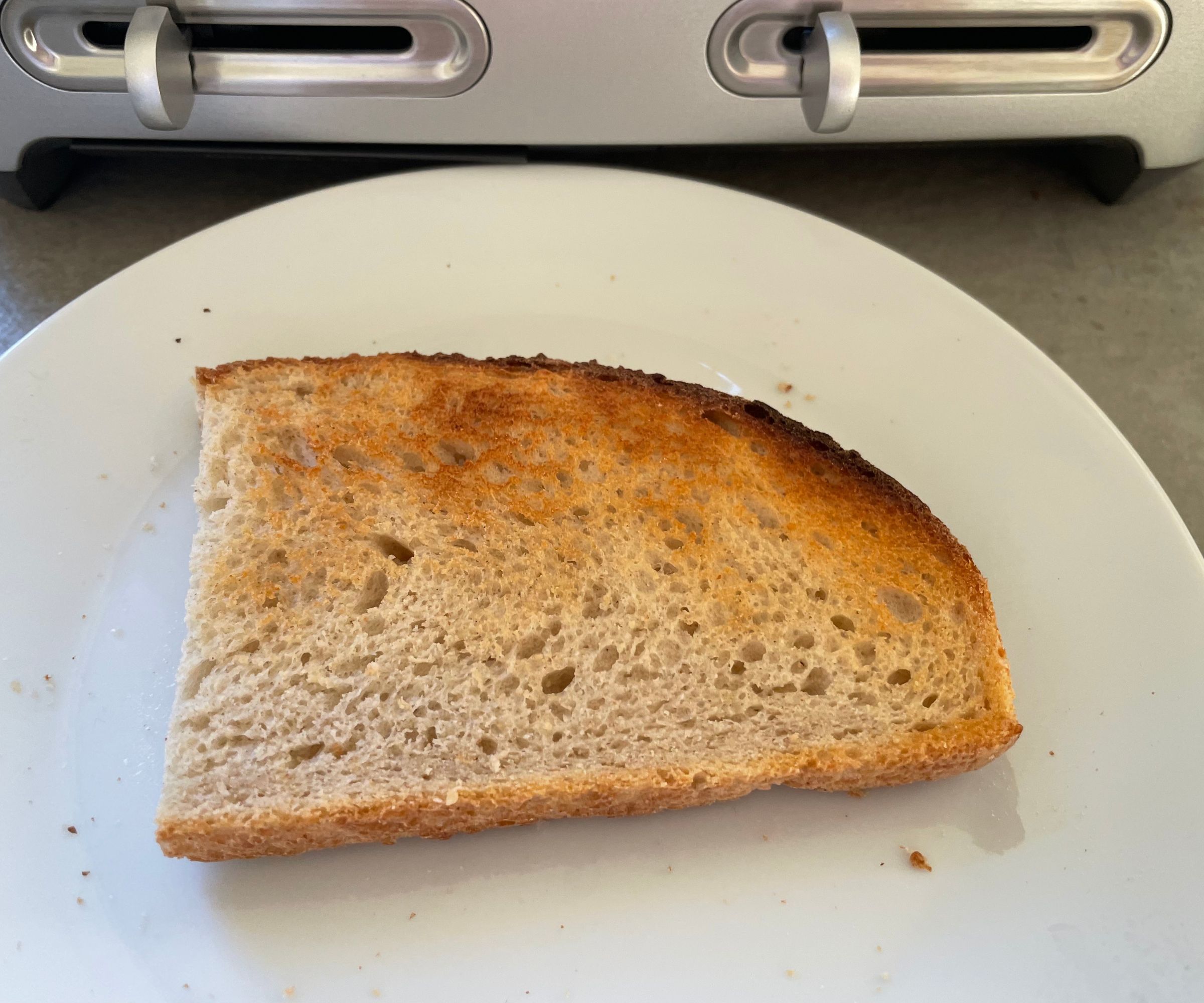
The white bread set a precedent for under-toasting. I tried a long slice of sourdough, but the short slots couldn't fit it in unless I halved the slice. This is pretty standard, but there are a few toasters (such as the Smeg Four Slice toaster, available at QVC) on offer with longer slots if that's a deal-breaker for you.
I gave the sourdough three minutes, thinking it would probably be underdone. It came as no surprise that this was very pale when the toaster lifted my sourdough at exactly three minutes into toasting.
I gave it another two minutes, so it had now had five minutes in total. At this point, the top crust of the sourdough was well done, whilst the base of my slice was a little pale. I didn't want to burn the top, so took it out and put butter on it. Taste wise, this was warm, crunchy on the outside and soft on the inside, so the Breville had done a relatively good job. I would have just liked more consistency and a shorter toasting time.
Test 3: Bagel
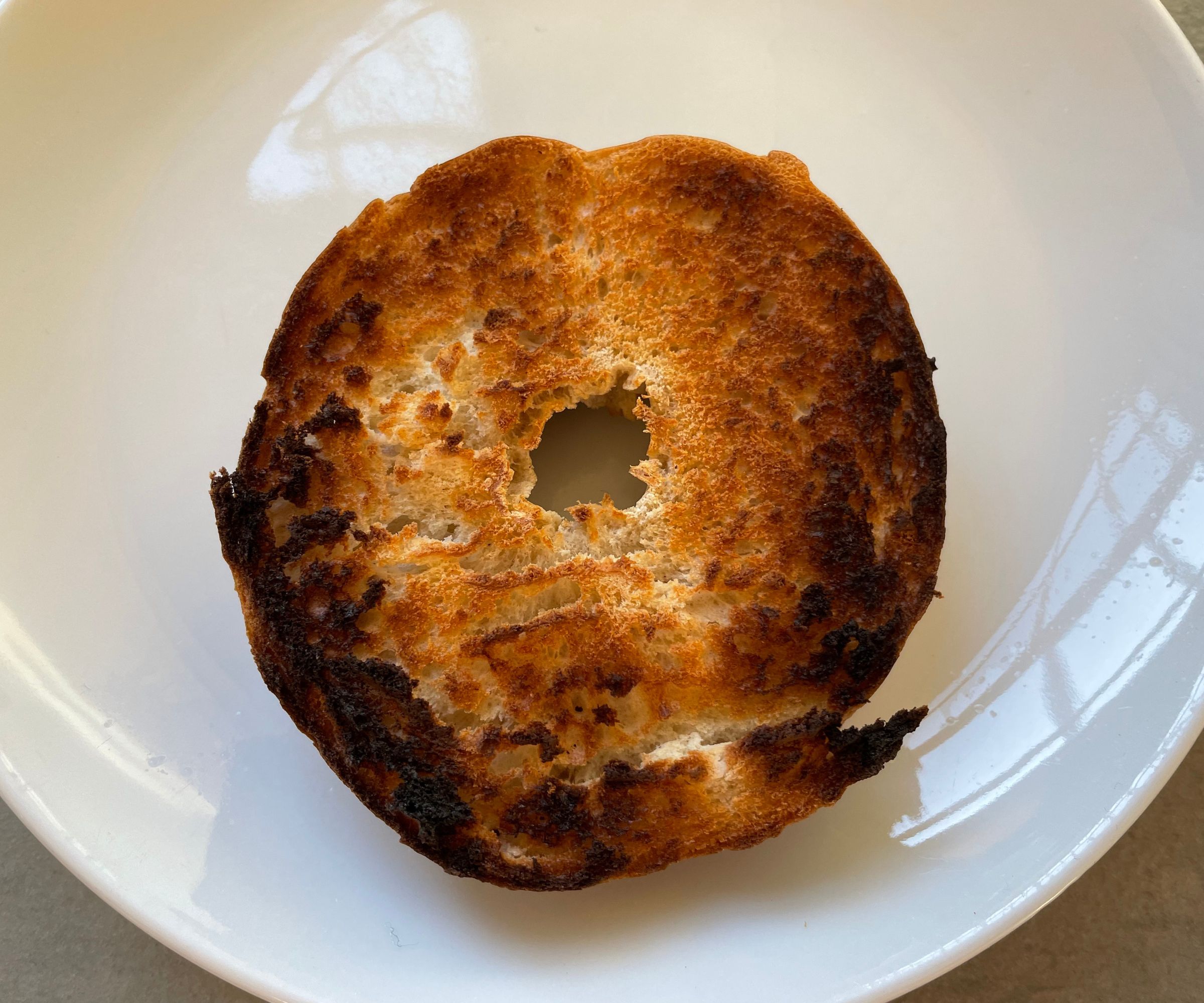
The bagel setting is one of Breville's dedicated buttons, so I was hopeful that this would be a success. I gave this a standard two minutes to toast, which is how long most models take. However, when the Breville lifted my bagel out (at exactly two minutes) it was way overdone. You can see in my picture above that it was too burnt to eat. I cut it in half and, interestingly, it was still doughy in the middle. If there's a silver lining, it was the doughy center. It's an indicator that this can be good toaster for bagels, but be careful with your timings.
I tried giving a different bagel just one minute on the bagel setting and I thought it was almost overdone again, although I like my toast quite light. There was a good, golden crunch to the cut side of the bagel, without the outside becoming too leathery on the outside. The doughy middle was still soft too, so once you know to expect an uncharacteristically fierce performance on the bagel setting, this can do a good job.
Test 4: gluten-free bread
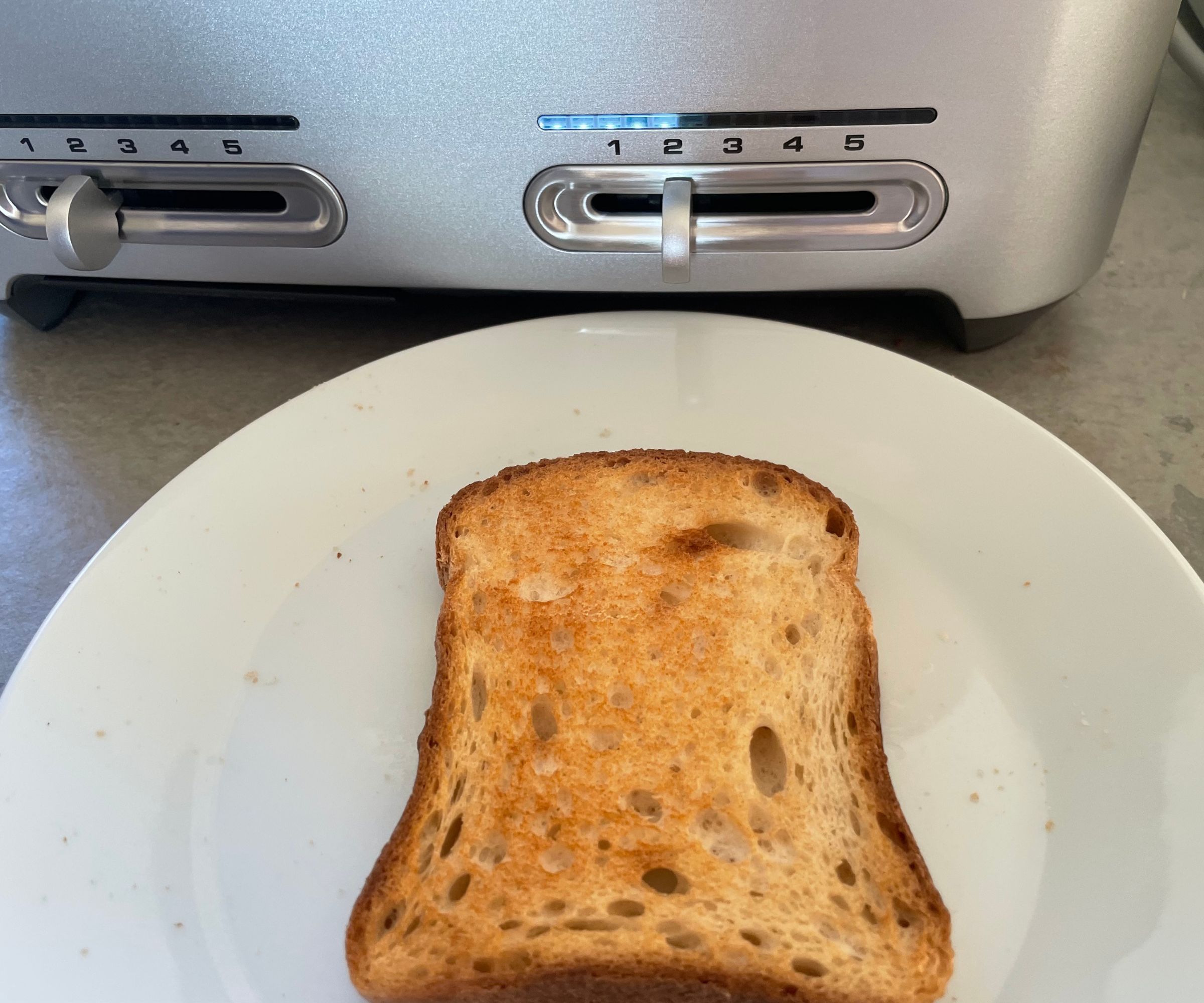
There are few baked goods as tricky to test as gluten-free bread. I put my slice in for two minutes, on the standard setting. When it auto-lifted on the two minute mark, it needed a bit more more — and then a bit more, and then a bit more.
The end results were pretty gross: the bread was dried out and tough to eat. The gluten-free bread was my second slice in the toaster after turning it on, so I think it hadn't heated up to its full, fierce power yet. If you are putting gluten-free bread into a cold Breville toaster, opt for three or four minutes, rather than repeating 'a bit more', because that's where you sacrifice on texture.
Test 5: Fruit bread
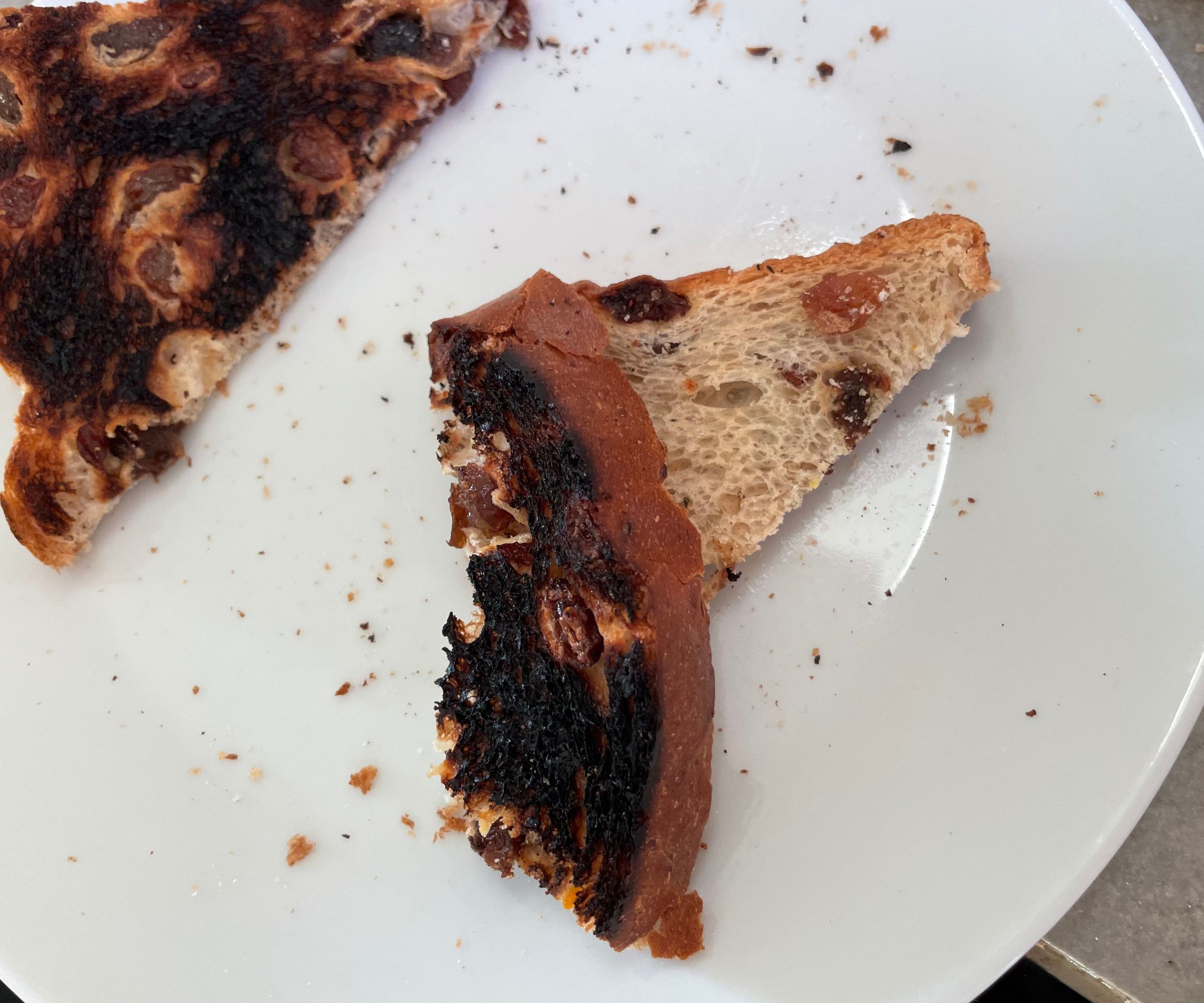
I won't sugar-coat it: this was a disaster. The bagel button is also the fruit bread setting, but you need to double-press this to access the alternative setting. I didn't realise this and gave my fruit bread one minute on the bagel setting. It came out as bread on one side and completely cremated on the other. You can see in my picture, that it's a stark contrast.
Once I had established how to switch between settings (you can tell because the lights turn blue), I put my fruit bread in on the specific setting. After one minute, I was keen to take it out, given my previous experience with the Breville, but it was too light. I gave it the full 130 seconds as recommended and, no surprises, it turned out overdone.
On my third piece of fruit bread, I used the proper setting, gave it a minute and a half, and it was good. If I gave it more time, it was likely to be overdone, so I settled for lightly golden toast. It was well-warmed, lightly crunchy, and fluffy on the inside. It's the story of this toaster in miniature. It can make excellent toast, but there's a learning curve that you shouldn't need for such a basic appliance.
test 6: Pop tart
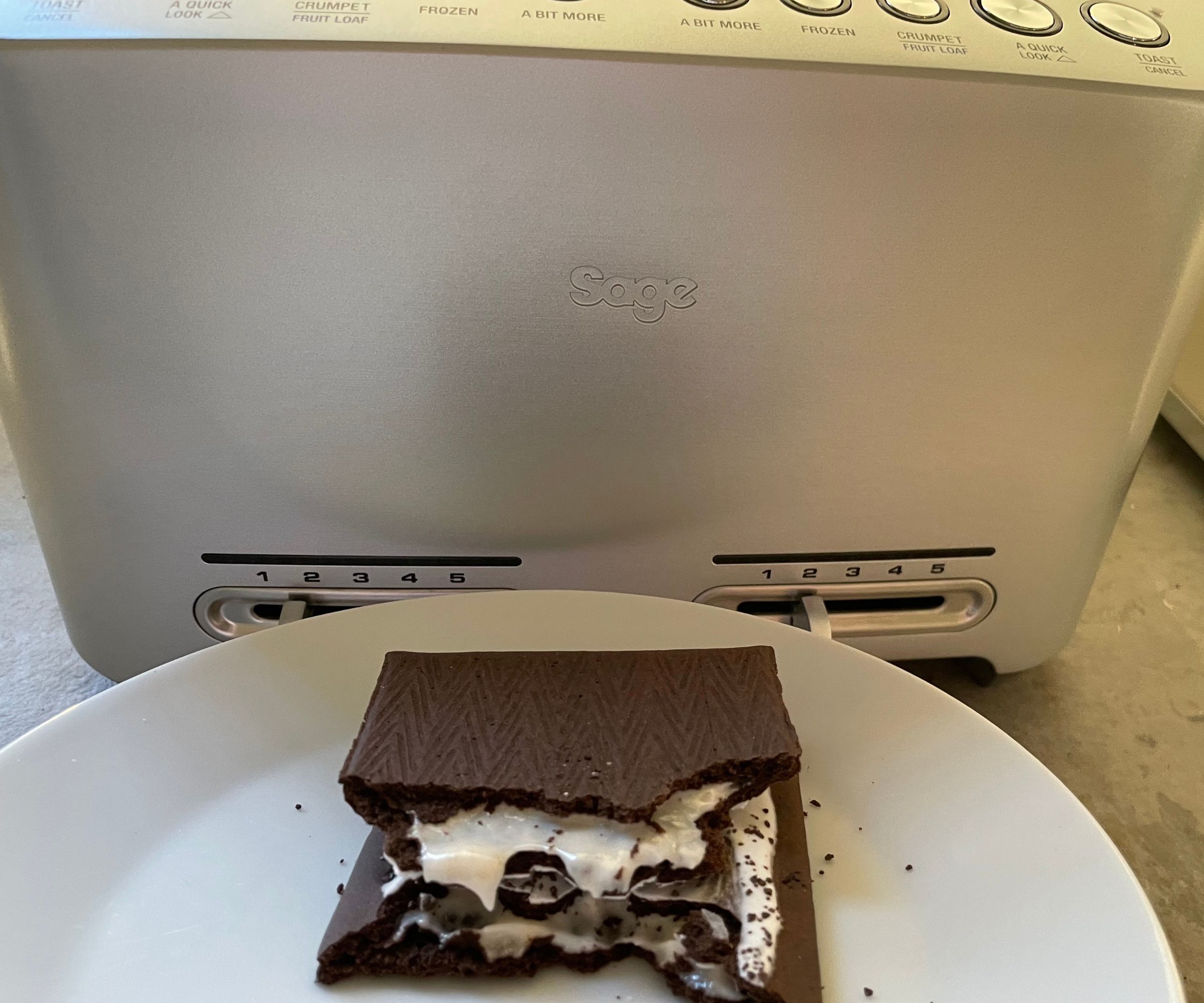
I used the gentle fruit bread setting on my pop tart, because I didn't quite know where I stood with the Breville at this stage. It was warm after one minute, but I gave the pop tart 'a bit more' from the settings menu and took it out after that final thirty second blast. The icing was still neatly intact, whilst all the insides were gooey and crumbly. This was the greatest success I had with the Breville, so I was really pleased.
Cleaning, storage, and maintenance
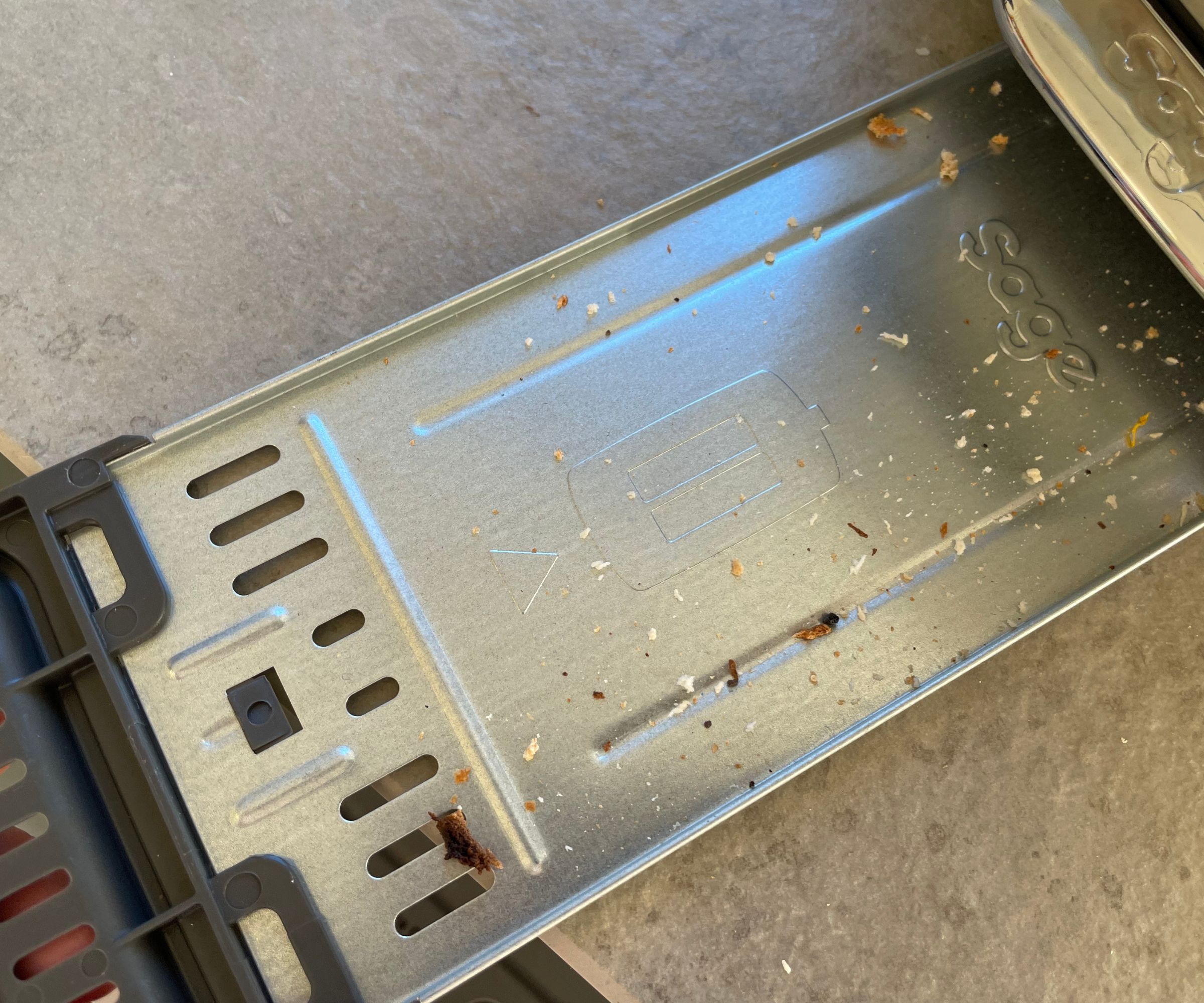
Breville has thought about everything when it comes to cleaning and storage. The crumb tray is easy to remove from the base; the auto-lift comes up high enough to stop small crusts from festering at the bottom of the slots; and the finish on the Breville is finger-print resistant. I had buttery fingers and didn't leave a mark. If you don't like cleaning toasters, it's a low-maintenance option.
Storage-wise, although this is big, it cuts a pretty sleek silhouette. There's also a neat cord storage part at the bottom, which will stop your countertops from getting all cluttered with wires. I'd recommend buying this only if you have the countertop capacity to keep it on show. It's probably a bit too big and too much hassle to take in and out of a cupboard, especially because this took a long time to cool down.
How does it rate online?
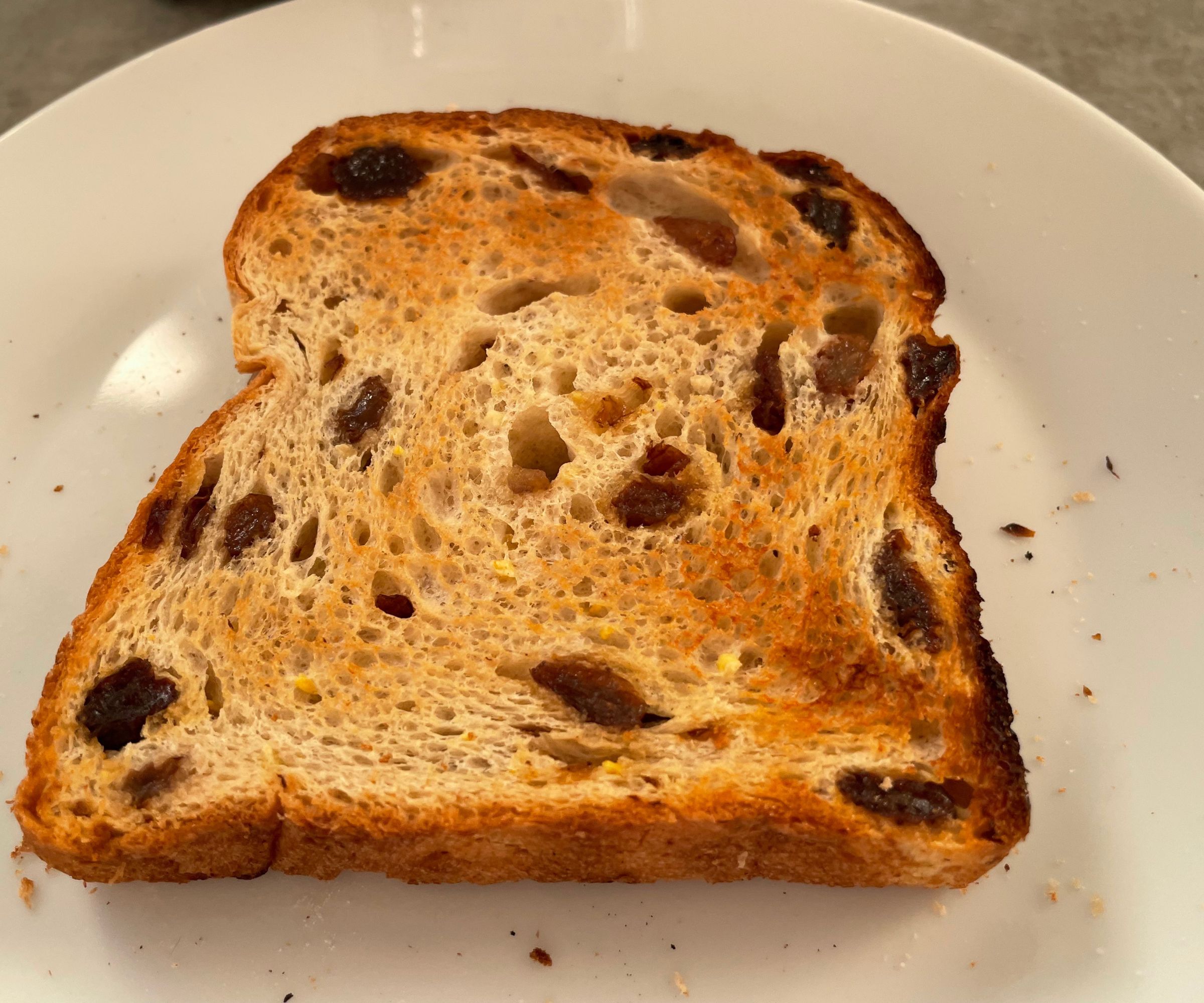
There aren't a lot of reviews dedicated to the Breville Four Slice Smart Toaster; most people talk about the alternative Breville Die Cast Two Slice, available at Amazon . However, from the few reviews I found, this turned out to be a popular option. People were impressed that, across four slots, all the pieces of toast would lift up evenly toasted (compared to each other). Lots of reviewers enjoyed having a cycle countdown indicator and a reasonable range of buttons for their toasting functions. Another popular feature was the auto-lift and lowering, which sounds excessive, but even I (a gimmick cynic) found it useful. When you're busy in the kitchen, it's one less thing to think about.
Criticisms were generally around the buttons. People felt that they looked more complicated than they needed to be. Whilst being able to toast on two independent settings was incredibly useful for some, others just wanted a way to set all four slots running together, in synchronisation.
People noticed that this heats up quickly and takes a while to cool. That explains why I wouldn't recommend storing it in a cupboard and why my toasting times got shorter and shorter as I worked through our breads.
How does it compare?

I've tested my fair share of toasters and have a lot of thoughts about where Breville Die Cast 4-Slice Toaster sits in the rankings. As far as four slice toasters go, this has the best range of settings. Not many bigger toasters have a bagel function and they certainly don't have the auto lowering and lifting (which so many people love). However, Breville doesn't make their four slot toaster from two long slots. This meant that, models such as the Smeg Four Slot Toaster, available at QVC could effortlessly fit a long sourdough slice in (see image above), the Breville could not. I had to halve my lovely, long artisanal slice in order to fit it in.
Whilst the Smeg doesn't have the luxury of the auto-lift, it was much more consistent at toasting different breads, so was easier to use. If you eat a lot of artisanal breads and you need capacity, I think I'd be tempted to go for the Smeg, even though it means sacrificing on Breville's special bagel function.
If you don't need capacity, but like the sound of a smarter toaster, you need to check out Breville's The Toast Select Luxe, available at QVC. This shares a similar aesthetic to the Breville Four Slice Die Cast, with a sleek, aluminium finish, but has more settings (including whole grain, rye, and waffle), whilst delivering much more consistent results. The only drawback with The Toast Select is that you're unlikely to save any money. Even though it's half the size, it's still the same price. However, if you prize aesthetics and performance, this is a competitive option.
Should you buy it?
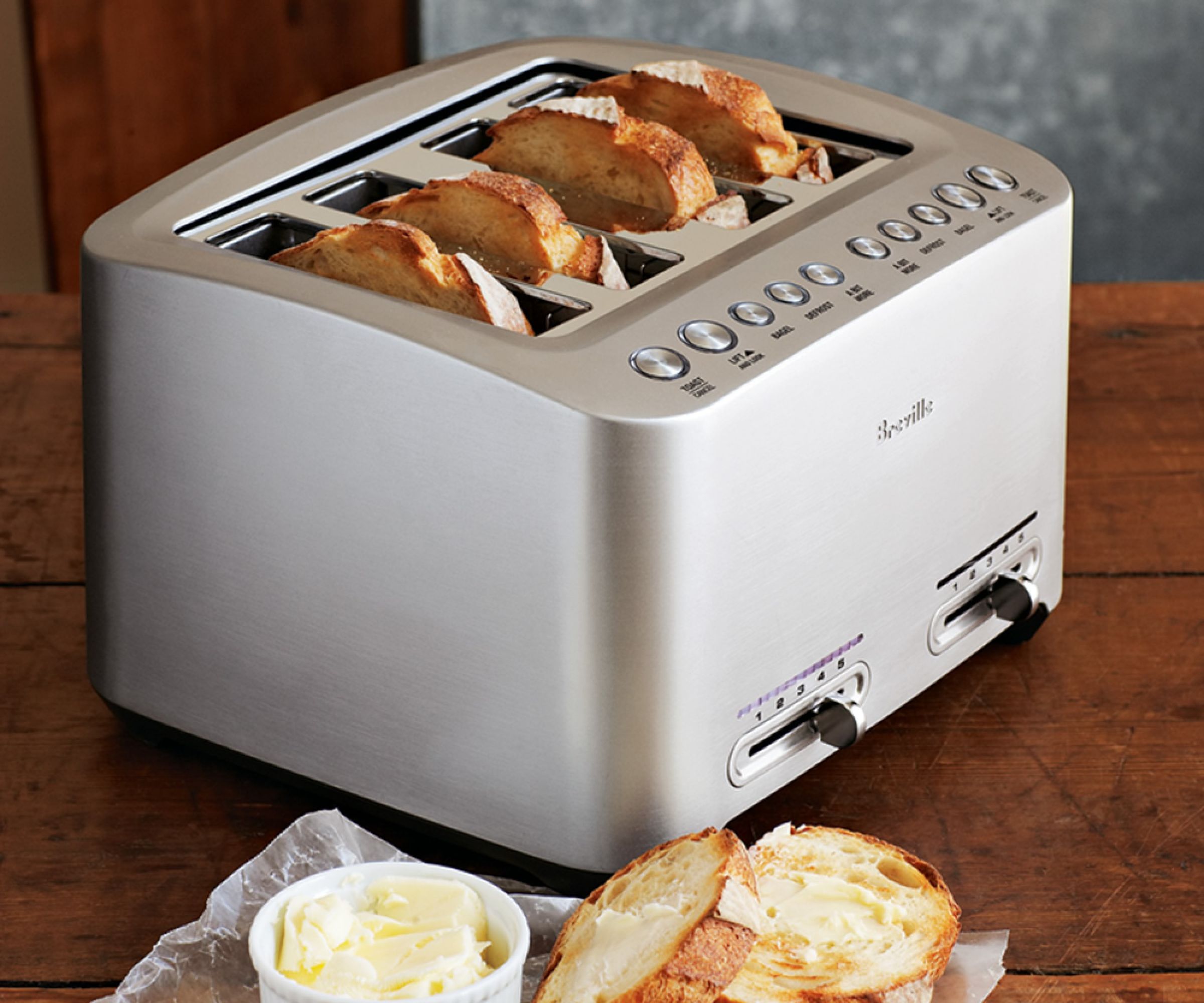
The Breville Die Cast 4-Slice Toaster is great if you need capacity in the mornings. Having the ability to isolate two slots and run different settings at the same time can be priceless for some families. Plus, after using the handy auto-lift function for a while, I came to resent manual lift toasters (first world problems, I know). However, if you'll be using this to make lots (more than eight slices) of toast, you'll need to keep an eye on timings, because it's inconsistent when you haven't used it for a few hours.
How we test
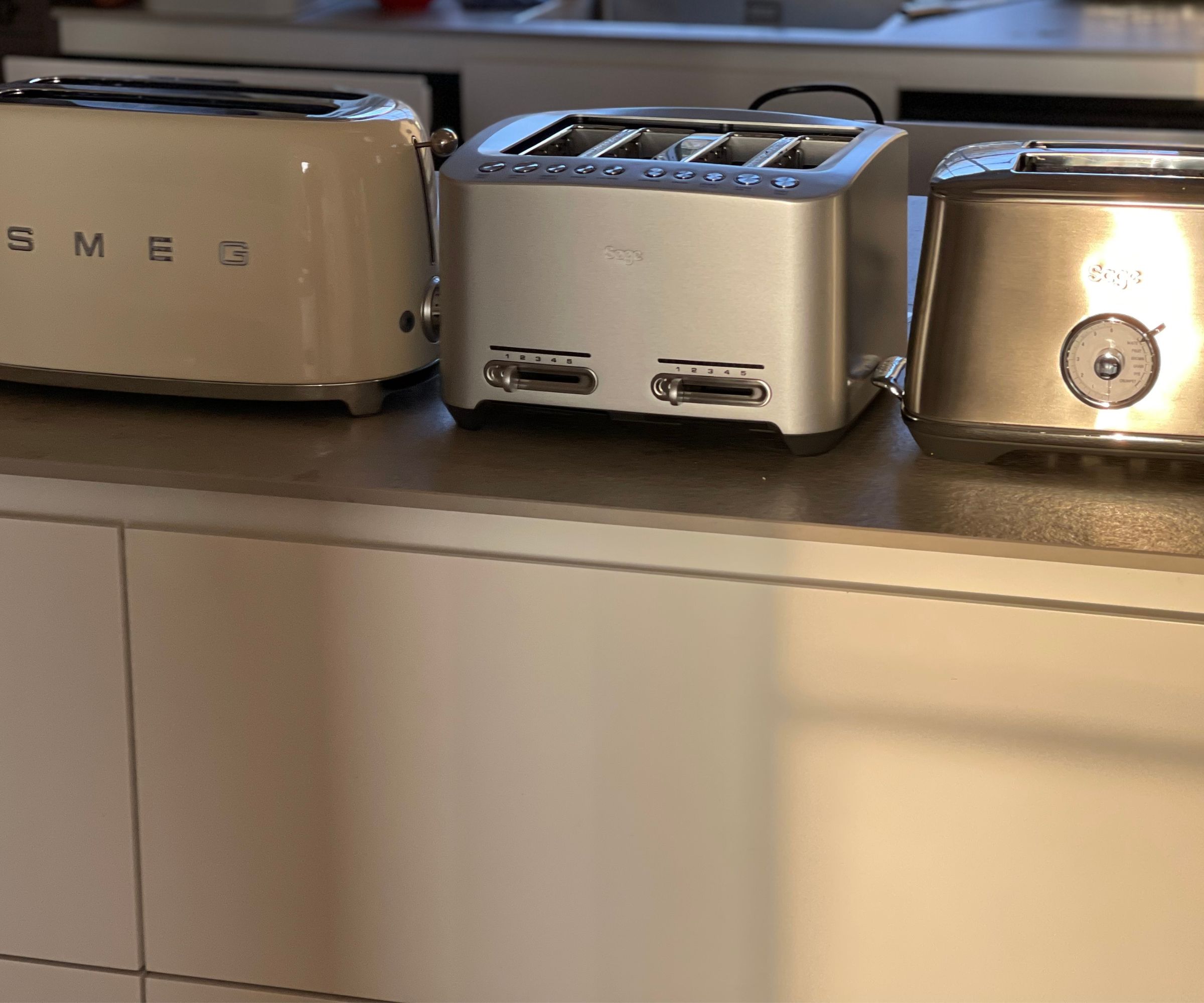
At Homes & Gardens, we take our toaster testing very seriously. That's why we have a team of experts who make sure that any toaster we review has been through the ringer. Before it arrives in our kitchen, we'll research it, so we know all about the special features. Then, when we can carry out our real-life evaluation, we'll put it through our standardized series of tests, as well as any that can see what the special features are like.
Once we're happy with our opinion of a toaster, we'll write up a review for you, letting you know about everything from unboxing to cleaning (as well as taste tests, of course). If you're interested in finding out more, you can visit our dedicated page for how we test.







